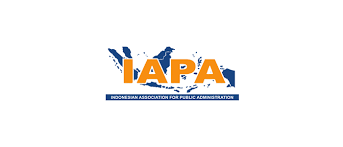Students' Concept Mastery: Reasoning Ability and Concept Mastery of Evolution
Abstract
Now a days, students tend to learn the concept of evolution through various sources independently through memorizing or reading on their own and unaware of the mutual relations among them in everyday life. The tendency leads makes learning the concept of evolution becomes meaningless and not profound, even though there are many studies that states that scientific reasoning will make the knowledge gained more meaningful and profound. This study aims to test the hypothesis, is there whether any correlation between students' concept mastery levelwith students' scientific reasoning skills in the evolution learning process. A total of 33 students participated in this study. Students' reasoning skills are obtained through the use of Test of logical thinking (TOLT), while students' concept mastery of evolution was assessed using concept knowledge assessment. The results of this study indicate that there is a correlation between students' scientific reasoning skills and students' concept mastery, where the tendency is that students who think formally are more dominant in obtaining high scores or better concept mastery of the knowledge.
References
Abdurrahman, D., Efendi, R., & Wijaya, A.F.C. (2016). Profil Tingkat Penalaran danPeningkatan Penguasaan Konsep Siswa Sma dalam Pembelajaran Fisika Berbasis Ranking Task Exercise Peer Instruction. Jurnal Wahana Pendidika nFisika. Vol.1(2013):84-91
Borgerding, L.A. (2016). Ohio high school biology teachers' view of state standard for evolution: impacts on practice. Science Educator, Vol. 21(1): 1-19
Dunbar, K & Fugelsang, J. (2005). Scientific Thinking and Reasoning. In K. J. Holyoak& R. G. Morrison (Eds.), The Cambridge handbook of thinking and reasoning. New York, NY, US: Cambridge University Press
Fraser, B J., Tobin, K.G. & McRobbie, C.J. (2014). Second International Handbook of Science Education. Springer International Handbooks of Education
Grossman, W. E & Fleet, C.M. (2017). Changes in Acceptance of Evolution in a College-Level General Education Course. Journal of Biological Education, vol.51(4): 328-335
Helmi., Rustaman, N. Y., Tapilouw, F. S & Hidayat, T. (2019). Misconception Types Analysis on Mechanism of Evolution. J.Phys.: Conference Series. Vol.1175(012169): 1-7
Hewson, P.W., Beeth, M.E & Thorley, N.R. (1998).Teaching for conceptual change International Handbook of Science Education. Dordrecht, Netherlands:KluwerAcademic Publishers.
Lawson, A.E. (1978). The development and validation of a classroom test of formal reasoning. Journal of Research in Science Teaching, 15(1), 11-24.
Nur, S.A & Rahman, A. (2013). Pemecahan Masalah Matematika Sebagai Sarana Mengembangkan Penalaran Formal Siswa Sekolah Menengah Pertama. Jurnal Sainsmat. Vol.2(1) 84-92
Piaget, J. (1964). Cognitive development in children: development and learning. Journal of Research in Sciences Teaching, Vol. 1(2): 176-186
Shuttleworth, M. (2019). Scientific Reasoning. Retrieved edition, from Explorable.com: https://explorable.com/scientific-reasoning
Stammen, A.N., Malone, K.L & Irving, K. (2018). Effects of Modeling Instruction Professional Development on Biology Teachers’ Scientific Reasoning Skills. education science, 8(119), 1-19
Steinberg, R & Sebastian, C. (2013). Understanding and Affecting Science Teacher Candidates’ Scientific Reasoning in Introductory Astrophysics. Physical Review Special Topics-ion Research, Vol.9(2): 1-10
Sukardi. (2009). Metodologi Penelitian Pendidikan (Kompetensi dan Praktiknya). Jakarta: Bumi Aksara.
Copyright (c) 2020 Indonesian Journal of Social Research (IJSR)

This work is licensed under a Creative Commons Attribution-ShareAlike 4.0 International License.
The Authors submitting a manuscript do so on the understanding that if accepted for publication, copyright publishing of the article shall be assigned/transferred to Indonesian Journal of Social Research (IJSR) Universitas Djuanda as Publisher of the journal. Upon acceptance of an article, authors will be asked to complete a 'Copyright Transfer Agreement'. An e-mail will be sent to the corresponding author confirming receipt of the manuscript together with a 'Copyright Transfer Agreement' form by online version of this agreement.
Indonesian Journal of Social Research (IJSR) Universitas Djuanda, the Editors and the Editorial Board make every effort to ensure that no wrong or misleading data, opinions or statements be published in the journal. In any way, the contents of the articles and advertisements published in the Indonesian Journal of Social Research (IJSR) Universitas Djuanda are sole and exclusive responsibility of their respective authors and advertisers.
Remember, even though we ask for a transfer of copyright, our journal authors retain (or are granted back) significant scholarly rights as mention before.
The Copyright Transfer Agreement (CTA) Form can be downloaded here: Copyright Transfer Agreement-IJSR 2020
The copyright form should be signed electronically and send to the Editorial Office e-mail below:
Dr. Rasmitadila, M.Pd (Editor-in-Chief)
Universitas Djuanda
Jl. Tol Jagorawi No.1, Ciawi, Kec. Ciawi, Bogor, Jawa Barat 16720
Website: http://journal.unida.ac.id/index.php/IJSR/index
Email: ijsr@unida.ac.id





4.png)



